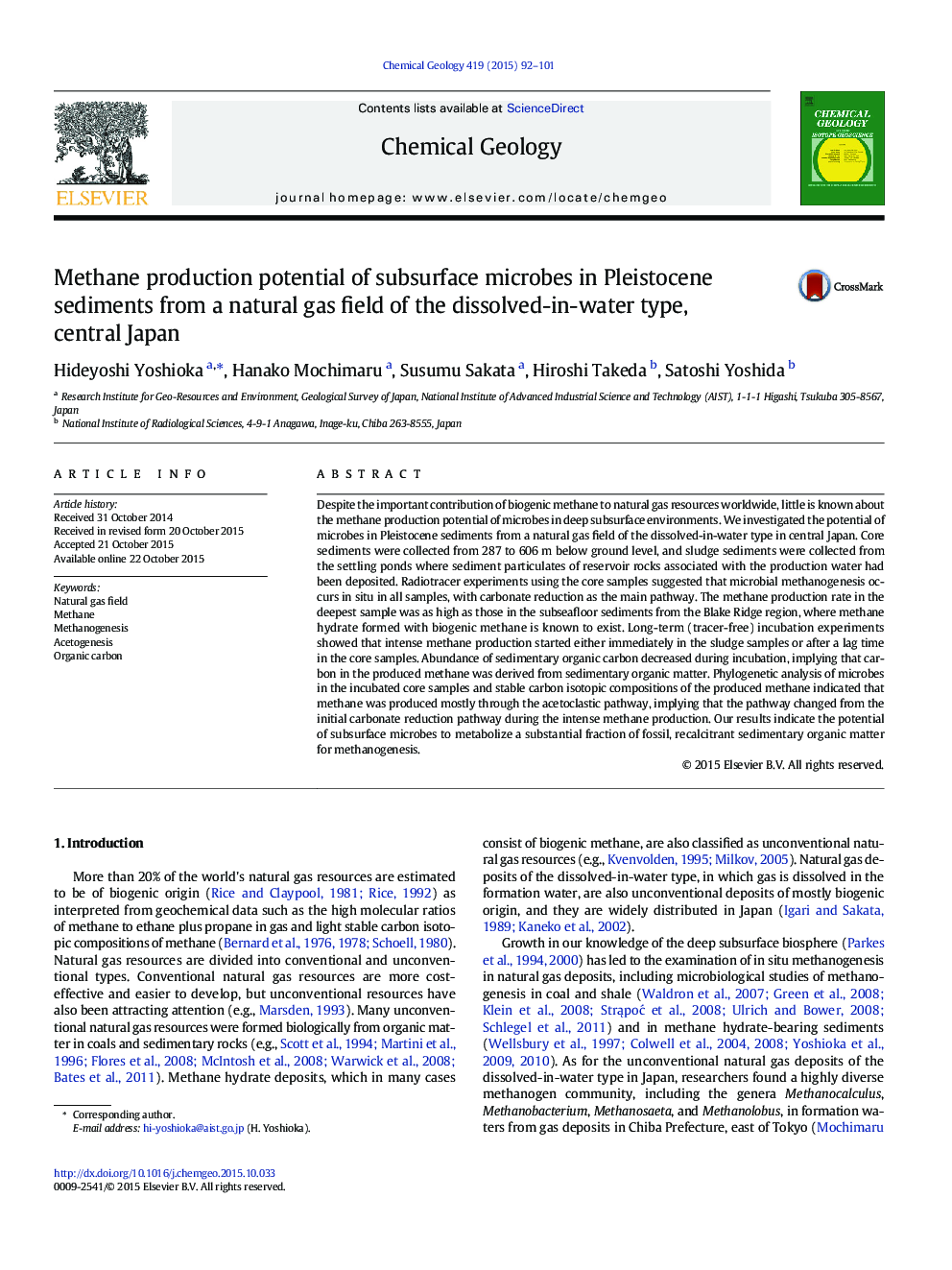| کد مقاله | کد نشریه | سال انتشار | مقاله انگلیسی | نسخه تمام متن |
|---|---|---|---|---|
| 4698404 | 1637555 | 2015 | 10 صفحه PDF | دانلود رایگان |
• Microbial methanogenesis occurs in situ in the sediments from a gas field.
• Intense methane production occurred in log-term incubation of the core sediments.
• Microbes can metabolize the sedimentary organic matter for methanogenesis.
Despite the important contribution of biogenic methane to natural gas resources worldwide, little is known about the methane production potential of microbes in deep subsurface environments. We investigated the potential of microbes in Pleistocene sediments from a natural gas field of the dissolved-in-water type in central Japan. Core sediments were collected from 287 to 606 m below ground level, and sludge sediments were collected from the settling ponds where sediment particulates of reservoir rocks associated with the production water had been deposited. Radiotracer experiments using the core samples suggested that microbial methanogenesis occurs in situ in all samples, with carbonate reduction as the main pathway. The methane production rate in the deepest sample was as high as those in the subseafloor sediments from the Blake Ridge region, where methane hydrate formed with biogenic methane is known to exist. Long-term (tracer-free) incubation experiments showed that intense methane production started either immediately in the sludge samples or after a lag time in the core samples. Abundance of sedimentary organic carbon decreased during incubation, implying that carbon in the produced methane was derived from sedimentary organic matter. Phylogenetic analysis of microbes in the incubated core samples and stable carbon isotopic compositions of the produced methane indicated that methane was produced mostly through the acetoclastic pathway, implying that the pathway changed from the initial carbonate reduction pathway during the intense methane production. Our results indicate the potential of subsurface microbes to metabolize a substantial fraction of fossil, recalcitrant sedimentary organic matter for methanogenesis.
Figure optionsDownload as PowerPoint slide
Journal: Chemical Geology - Volume 419, 25 December 2015, Pages 92–101
